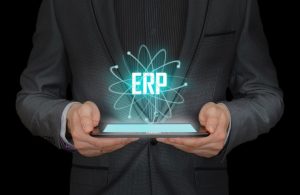
Choosing the right Enterprise Resource Planning (ERP) system is like finding a golden key – if done right it unlocks streamlined operations and boosted productivity for your entire organization. But before you embark on this exciting quest, a crucial first step is mapping your business needs to the functionalities offered by different ERP systems. This ensures you select the perfect fit, not a system that just looks good on paper.
This post will equip you with a step-by-step approach to assess your business and identify the ideal ERP features. With this roadmap in hand, you’ll be well on your way to making an informed decision that would help propel your business forward.
Step 1: Charting Your Business Landscape
- Identifying Your Pillars: Begin by laying out all your core business processes, like finance, supply chain, HR, sales, and customer service. You need to include department heads in this exploration to gain a well-rounded perspective.
- Mapping the Current Course: Craft detailed flowcharts or process maps that illustrate your current workflows. Highlight bottlenecks, redundancies, and any areas ripe for improvement.
- Setting Your Course: Define clear objectives for what you want to achieve with the ERP system. Do you aim to reduce operational costs or streamline inventory management? Make sure you establish Key Performance Indicators (KPIs) to measure progress towards these goals.
Step 2: Gathering the Crew and Their Treasure Map
- Unveiling Hidden Gems: Conduct surveys, interviews, and workshops with employees from all departments to gather their input and identify pain points. Prioritize capturing diverse needs across the organization.
- Prioritizing the Bounty: Categorize requirements into three chests: must-have features, desirable features, and those considered optional. Focus on functionalities critical to core operations and strategic goals.
- Aligning the Map with the Stars: Ensure prioritized features align with your organization’s short-term and long-term objectives. Validate this alignment with senior management and key stakeholders to ensure strategic coherence.
Step 3: Matching Your Map to the Hidden Coves
- Scouting the Territory: Research potential ERP vendors and solutions that cater to your specific industry. Reviews, case studies, and customer testimonials can be valuable resources here.
- Charting the Features: Develop a feature matrix to compare the functionalities offered by various ERP solutions against your prioritized requirements. Evaluate how each system addresses your must-have and desired features.
- Bridging the Gaps: Perform a fit-gap analysis to identify where each ERP solution aligns with, or falls short of, your needs. Consider customization options to potentially bridge any identified gaps. Ensure all customizations are well documented.
Step 4: Assessing the Ship’s Capabilities
- Seamless Sailing: Ensure the ERP system can integrate smoothly with your existing software and tools. Compatibility with your current IT infrastructure is crucial.
- Ease of Navigation: Conduct usability testing with a representative group of end-users. The system should be intuitive and require minimal training for your crew.
- Adapting to the Open Seas: Consider scalability and flexibility. The ERP system should grow alongside your business, and offer configurable options to adapt to your evolving needs.
Step 5: Setting Sail with Confidence
- Testing the Waters: Request live demonstrations and trial periods to test the ERP systems in real-world scenarios. Use these trials to assess performance, user experience, and feature effectiveness.
- A Reliable Crew: Evaluate the level of customer support offered by the vendor. Request references and case studies from similar businesses that have successfully implemented the chosen ERP system.
- Charting the Course to Implementation: Select the ERP system that best fits your business needs and goals. Develop a detailed implementation plan, including timelines, resource allocation, and comprehensive training programs for your crew.
This guide should help you identify the ideal ERP features that not only address current challenges but also propels your business towards future growth and strategic objectives. Remember, a well-chosen ERP system acts as a powerful compass, guiding your organization towards a future filled with efficiency and productivity.
